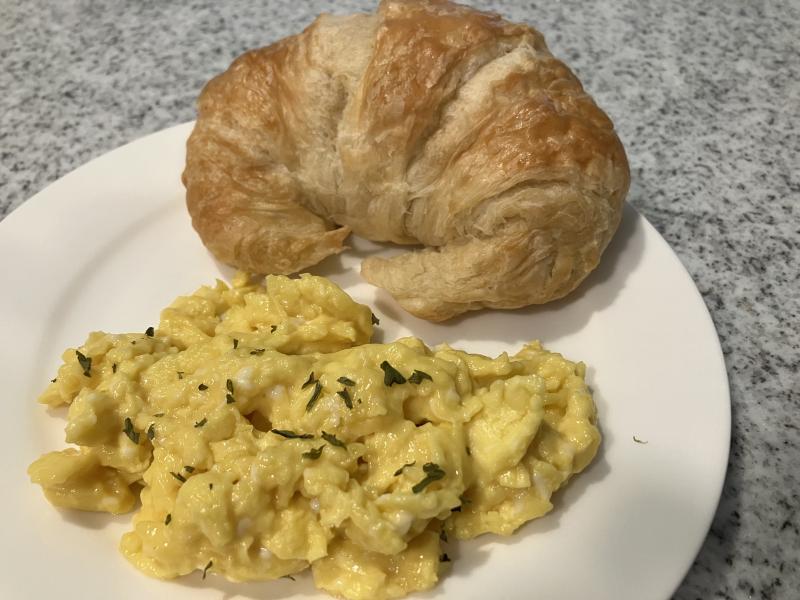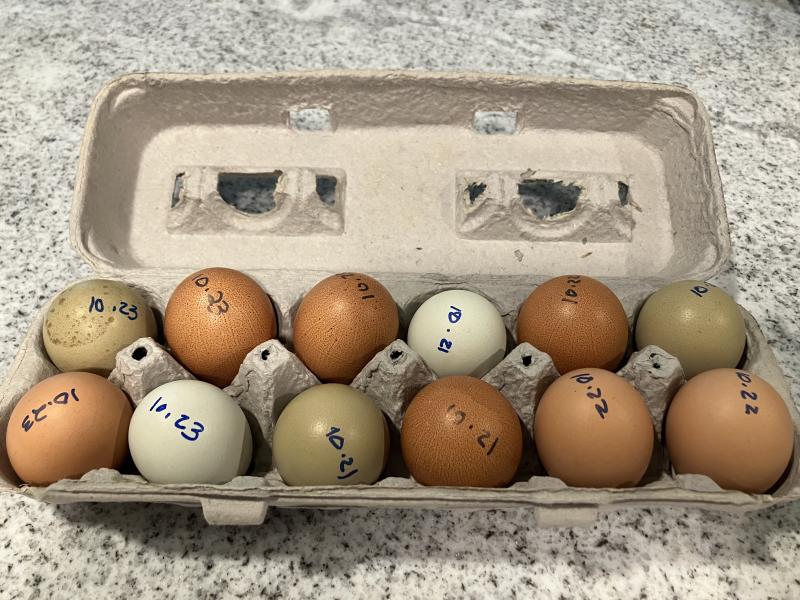Would you pass the scrambled egg test?
When did we start eating eggs? Most food historians agree that humans have been eating eggs for as long as we have been around; some estimates are for at least 6 million years. From wild game birds to backyard chickens, eggs of every size and color have been a source of quality protein for millennia. Ancient Egyptians were depicted with baskets of eggs, and China is considered one of the first cultures to domesticate hens. Also, the proper way to cook eggs is a subject that has fueled countless debates.
In fact, many restaurant chefs will use an egg dish to test job applicants, usually asking for an omelet or scrambled eggs. According to José Andrés, making eggs “is the perfect challenge for any chef.” Chef Jacques Pepin believes “very few can make a perfect omelet so that it’s perfectly cooked and perfectly shaped.” With very few ingredients and simple tools, these dishes require practiced technique, timing and coordination.
To begin, you must first choose your eggs. The collection in the photo comes from Cora’s Coop, each one individually labeled with its production date. These are from free-range, pasture-raised chickens and have deep-yellow, almost orange yolks with sturdy shells and clear whites. The different colors of the eggs come from the different breeds and pigments they produce as the eggshell is formed. There is no difference in the nutritional value among brown-, white- or green-shelled eggs.
The next consideration, whether making an omelet or scrambled eggs, is to choose between olive oil or butter for the pan. A key difference is flavor – butter adds creamy notes, and olive oil can add subtle peppery hints. From the perspective of heart health, butter contains more saturated fats, making olive oil, which also contains antioxidants, the better choice. Of course, you can always use a little bit of both.
What kind of pan should you use? There are all sorts of opinions on this topic, from well-seasoned cast iron to ceramic to nonstick. Each has its merits and deficits, whether too heavy, too difficult to clean, too challenging to keep from scratching or too harmful for the environment. I have a small ceramic skillet that has lasted far longer than most nonstick pans will endure, likely because I am careful with my tools and keep the heat level moderate.
Before you place the pan on the stove, you’ll need to whisk the eggs. Here again are a range of perspectives on what kind of vessel to use. I have a friend whose mother taught her to use a tall drinking glass so nothing splashes out. Others use their favorite measuring cups or cereal bowls. I treated myself to a small, handcrafted ceramic bowl with a convenient handle and pouring spout.
You may see a white filament when you crack your egg into a bowl. This is a perfectly normal part of the egg called a chalaza. There is one that extends from the top of the shell and another from the bottom to suspend the yolk from the shell membrane. The fresher your egg, the more noticeable they will be, but there’s no need to remove them since they’re made from the same material as the egg white.
Now, blend your eggs rapidly with a fork or whisk until they are uniform in consistency, about 60 seconds. Over-beating will destabilize the protein molecules, and the eggs will become rubbery, like the premade ones at some convenience stores. Finally, for the fluffiest eggs, add a bit of water or milk, which will create steam when they cook. Heat the pan on low, pour in the eggs and keep stirring until they are almost done. Remove from the heat and they’ll keep cooking a bit more while in the pan. You’re ready to serve perfect scrambled eggs!
Scrambled Eggs
Crack eggs into a mixing bowl and add water. Whisk until smooth, about 60 seconds. Heat olive oil in a small skillet over medium-low. Pour eggs into the pan and stir with a spatula in small circles around the pan, until the eggs look slightly thickened, about 30 seconds to a minute. Continue cooking, sweeping the spatula across the pan until you see creamy curds, another 30 seconds. When the eggs are almost set, remove the pan from the heat and allow to sit for a few seconds to finish cooking. Sprinkle with parsley; serve with salt and pepper, to taste. Yield: 2 servings.
Cheesy Scrambled Eggs
Crack eggs into a mixing bowl. Add water and whisk until smooth, about 60 seconds. Melt butter in a skillet over medium low. When butter is frothy, pour in eggs and stir continually with a spatula for about a minute. When eggs are starting to form curds, sprinkle with cheese and continue to stir until eggs are almost set. Remove from heat to sit for a minute, and season to taste with salt and pepper. Yield: 2 servings.























































